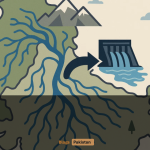For many aspiring immigrants, settling in Japan Residency—a country rich in tradition, innovation, and quality of life—can seem like a distant dream. But thanks to Japan’s Highly Skilled Professional Points System, earning permanent residency (PR) is now more achievable than ever, even in as little as two years.
This blog explores how people like YouTuber Tokuyuu have successfully navigated this system, the steps you need to take, and how to maximize your chances to Residency In Japan. Whether you’re a student, a working professional, or an aspiring expatriate, this is your complete guide to unlocking life in Japan—for good.
What Is Japan’s Highly Skilled Professional Points System?
Japan’s Highly Skilled Foreign Professional (HSFP) Residency visa program is a fast-track pathway to permanent residency, introduced to attract global talent. It rewards education, income, age, work experience, and Japanese language proficiency by assigning you a point score.
If you hit:
- 70 points: You qualify for PR in 3 years.
- 80 points: You qualify in just 1 year.
But even if you maintain a Highly Skilled visa for 3 years (regardless of points), you can still apply for PR. This system offers unprecedented flexibility for young, educated professionals looking to build a life in Japan.
Tokuyuu’s Journey: From Tourist to PR Holder in 2 Years
At just 18, Tokuyuu’s life changed after a trip to Japan. Captivated by the culture and language, he set his heart on living there. His roadmap to residency included:
Step 1: Mastering the Japanese Language
Language proficiency is a game-changer in the point system. Tokuyuu methodically studied for the JLPT (Japanese Language Proficiency Test), ultimately passing the N1 level, the highest certification available.
His Study Approach Included:
- Using the Kanji Study app daily to master written Japanese.
- Following YouTube grammar playlists.
- Immersing himself in Japanese podcasts for listening.
- Practicing with native speakers, particularly exchange students.
“It took five and a half years from my first visit, but I passed JLPT N1. That opened the door to everything else.” —Tokuyuu
Step 2: Scoring Points with the HSFP System
The HSFP visa assesses various criteria. Here’s how Tokuyuu scored 80+ points:
Key Factors That Helped Him:
- Age under 30 = maximum age-related points.
- Master’s Degree = strong educational bonus.
- High Salary Job in Japan = income-based points.
- JLPT N1 Certification = critical language bonus.
Estimated Breakdown:
| Criteria | Points |
|---|---|
| Age (20s) | 15 |
| Master’s Degree | 20 |
| High Salary (¥6M+) | 20 |
| JLPT N1 | 15 |
| Work Experience | 10 |
| Total | 80+ |
How to Reach 80 Points Faster
If you’re targeting the 1-year fast track, here are the most effective ways to accumulate points:
1. Start Early (Age Factor)
The younger you are, the more points you get. Early 20s gives you the most leverage.
2. Pursue Higher Education
A Master’s or PhD significantly boosts your score. Consider enrolling in a Japanese university or converting foreign qualifications.
3. Secure a High-Paying Job in Japan
Salaries above ¥6 million annually can elevate your score quickly. Tech, finance, engineering, and academic roles are strong candidates.
4. Pass the JLPT N1 or N2
Language fluency adds substantial points and opens doors in the job market.
Alternative Routes to Permanent Residency in Japan
While the points system is the fastest method, there are three main pathways to PR:
1. Marriage to a Japanese Citizen
After 3 years of marriage and 1 year of residence, you may apply for PR.
2. Long-Term Residency
Live in Japan for 10 consecutive years, with the last 5 under a work visa.
3. Highly Skilled Professional Visa (HSFP)
With 70 or 80 points, you can apply in 3 or 1 years, respectively.
Permanent Residence vs. Naturalization: What’s the Difference?
Many ask why not go all the way and naturalize as a Japanese citizen. The key reason?
Japan does not allow dual citizenship.
Tokuyuu, like many others, chose permanent residency to retain his original nationality while gaining full access to Japan’s job market and lifestyle benefits.
Benefits of Permanent Residence in Japan
- No visa renewals — live and work without limitations.
- Freedom to change jobs or go freelance.
- Travel flexibility — maintain PR status even if temporarily abroad.
- Access to home loans, insurance, and business ownership.
In essence, it’s as close to citizenship as you can get without giving up your home passport.
Tips for Students and Aspiring PR Applicants
If you’re just starting out, here’s a practical action plan to maximize your chances:
1. Focus on Japanese Language First
Get serious about studying and aim for JLPT N1 or N2. Your effort will pay off exponentially.
2. Target In-Demand Fields
Choose career paths that align with Japan’s economic priorities—think IT, engineering, biotech, academia, or financial services.
3. Network and Learn From Others
Join expat communities, watch YouTube creators like Tokuyuu, and attend local meetups to stay informed.
4. Use the Right Resources
Apps like Kanji Study, platforms like Wanikani, and video courses on BunPro or Cure Dolly are excellent tools.









